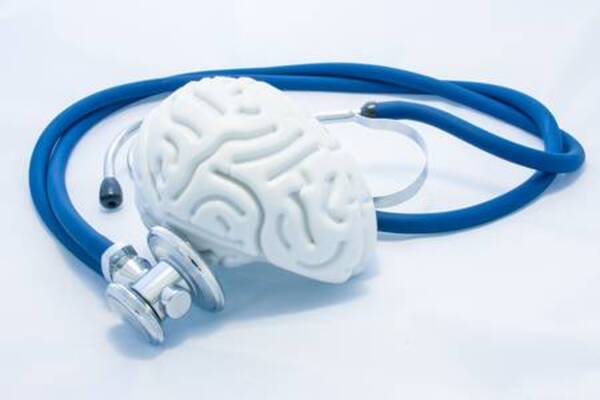Hydrocephalus is defined as the buildup of excess fluid in the cavities inside the brain. The fluid doesn’t flow or get absorbed anywhere, leading to blockages that can put pressure on your brain. It is common in infants or adults above the age of 60. It is important to get the condition treated early, or it may lead to severe impairment in the brain.
What is Hydrocephalus?
The fluid buildup in the ventricles (cavities) in the brain leads to a medical condition known as hydrocephalus. Due to the excess fluid, the ventricles expand in size and start putting pressure on the brain.
The fluid that normally flows through the brain is called cerebrospinal fluid. It surrounds the brain’s folds and lobes. It also consists of many proteins and nutrients important to keep the brain healthy.
The cerebrospinal fluid has several functions like:
● Allows the brain to float inside the skull.
● Regulates pressure inside the brain by flowing back and forth between the brain cavity and spinal cord.
● Removes waste products from the brain.
With hydrocephalus, the pressure on the cerebrospinal fluid increases, which causes damage to brain tissues. It can also lead to several impairments in brain function.
Symptoms of Hydrocephalus
The signs and symptoms associated with hydrocephalus vary among individuals. Infants and people above 60 years are at a higher risk of developing hydrocephalus.
Symptoms in infants:
● A rapid increase in the size of the head
● A bulging spot on top of the head
● Unusually large head.
Physical symptoms:
● Seizures.
● Vomiting.
● Irritability.
● Poor growth.
● Poor responsiveness to touch
Symptoms in Kids :
● Poor performance in school.
● Irritability or crankiness.
● Personality changes.
● Problems with walking and talking.
Physical symptoms:
● Vision problems.
● Headache.
● Laziness.
● Seizures.
● Nausea.
● Poor coordination.
● Poor appetite.
● Abnormal growth of a toddler’s head
Symptoms in young and middle-aged adults:
● Impaired vision.
● Headaches.
● Lethargy
● Memory loss.
● Issues with concentration and other thinking skills
● Frequent urge to urinate or loss of bladder control
Symptoms in older adults:
● Difficulty walking.
● Memory loss.
● Poor coordination.
● Loss of bladder control.
Complications of Hydrocephalus
Complications of hydrocephalus vary in individuals and are often hard to predict. If an infant develops hydrocephalus, it may result in physical, intellectual, and developmental disabilities. When treated at the right time, it may pose fewer complications.
Even after the treatment, adults who experience a decline in memory may have poor recoveries. In some cases, the symptoms may appear even after treatment. How severe the complications are going to be after the treatment depends on:
● Timely diagnosis and treatment of hydrocephalus.
● The severity of initial symptoms.
● Medical or developmental problems.
In several cases, the exact cause of hydrocephalus remains unknown.
Risk factors of Hydrocephalus
The risk factors in newborns are:
● A possible complication of premature birth and bleeding within the ventricles of the brain
● Infection in the uterus during pregnancy leading to damage in fetal brain tissues.
● Abnormal development of the nervous system leading to obstruction in the cerebrospinal fluid flow
Other factors contributing to the development of hydrocephalus in people of other age groups include:
● Brain tumours or lesions
● Spinal cord tumour
● Bleeding in the brain from a head injury
● Central nervous system infections
● Previous traumatic injuries to the brain
Treatment of Hydrocephalus
If you have mild symptoms of hydrocephalus, you may not need treatment. In severe cases, the doctor will recommend surgery. There are two types of surgical approaches for the treatment of hydrocephalus – shunt and endoscopic third ventriculostomy (a surgical procedure where the excess fluid is drained out of the brain).
● Shunt
The placement of a shunt (a long flexible plastic tube) is the most common treatment for patients with hydrocephalus. The shunt is placed inside the brain to keep the fluid flowing in the right direction.
One end of the shunt is placed in one of the ventricles of the brain. The other end is placed in another part of the body, like the stomach. This will redirect the excess fluid from the brain to the stomach.
● Endoscopic third ventriculostomy
It is a surgical procedure used in some cases. Using this approach, the excess cerebrospinal fluid is drained from the ventricles. The surgeon will use a small video camera to get the visualisation inside your brain. They will make a small hole either at the bottom or in between the ventricles. This will help release the excess cerebrospinal fluid from the brain.
Precautions of Hydrocephalus
Very few cases of hydrocephalus can be prevented. The precautionary measures include:
● Regular health checkups during pregnancy.
● Use of safety gears such as helmets while riding a motorcycle.
● Wearing seatbelts while driving the car.
Faq’s of Hydrocephalus
- What is the survival rate with hydrocephalus?
When caught early, the survival rate with hydrocephalus is high. The survival rate in infants below 3 months is extremely low. For hydrocephalus patients above the age of 6 months, the survival rate is 64%.
- Can hydrocephalus be treated without surgery?
Currently, there is no way to cure hydrocephalus without surgery. The excess fluid needs to be drained from the brain. With the right diagnosis, the doctor may recommend either the shunt system or the endoscopic third ventriculostomy. Depending on the severity of the hydrocephalus, some people may need additional treatment as well.
- Does hydrocephalus affect memory?
Memory loss is one of the symptoms of hydrocephalus in adults. In some cases, adults who experienced memory loss may have poor recoveries. When diagnosed and treated early, the symptoms may go away. In some cases, some of the symptoms reoccur.


















